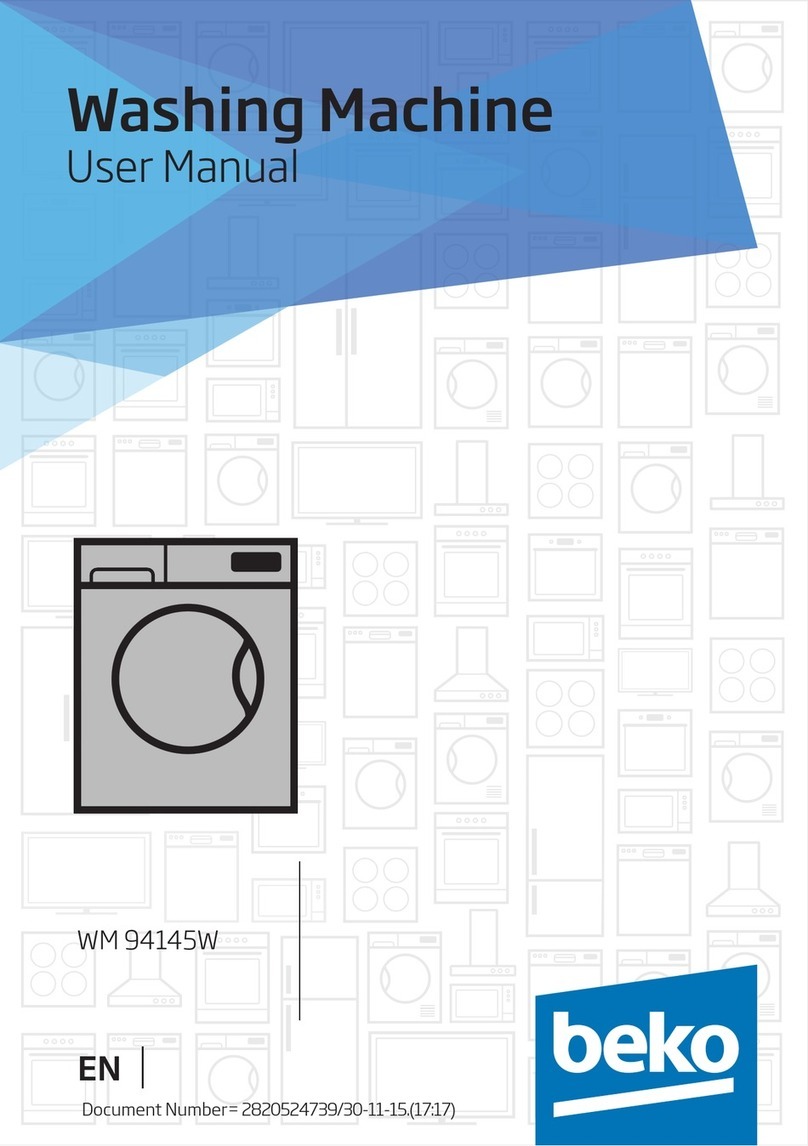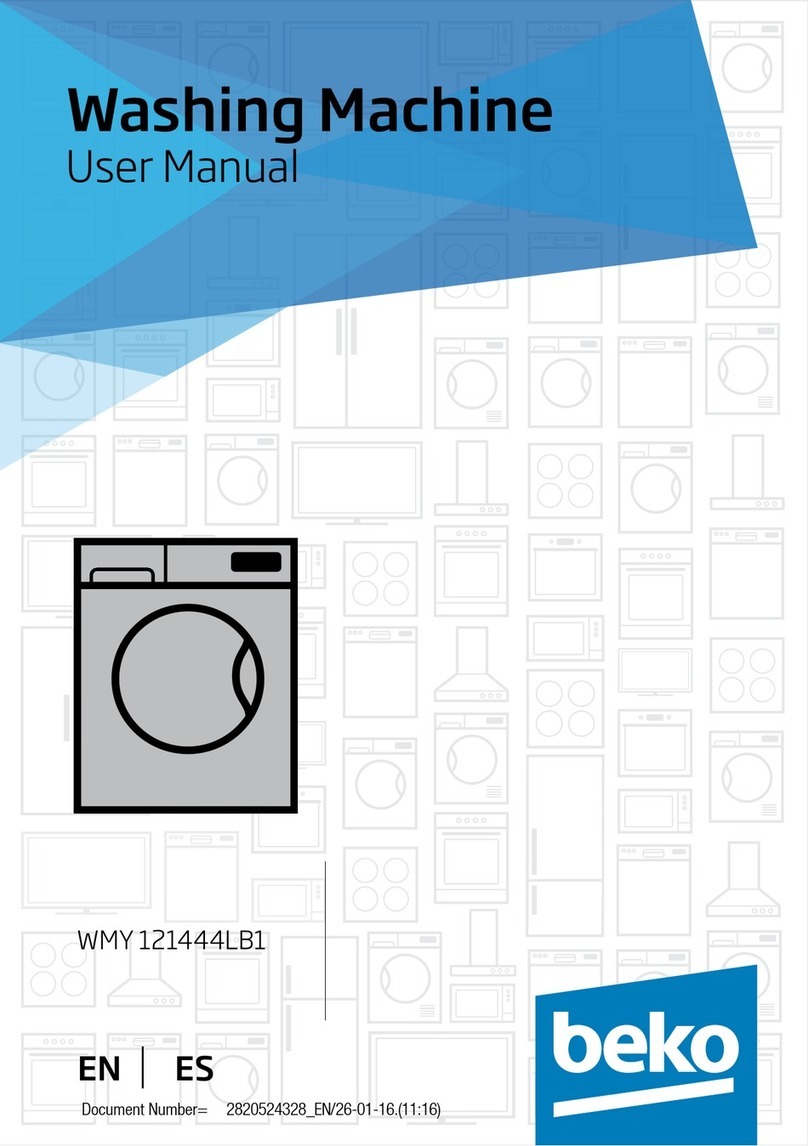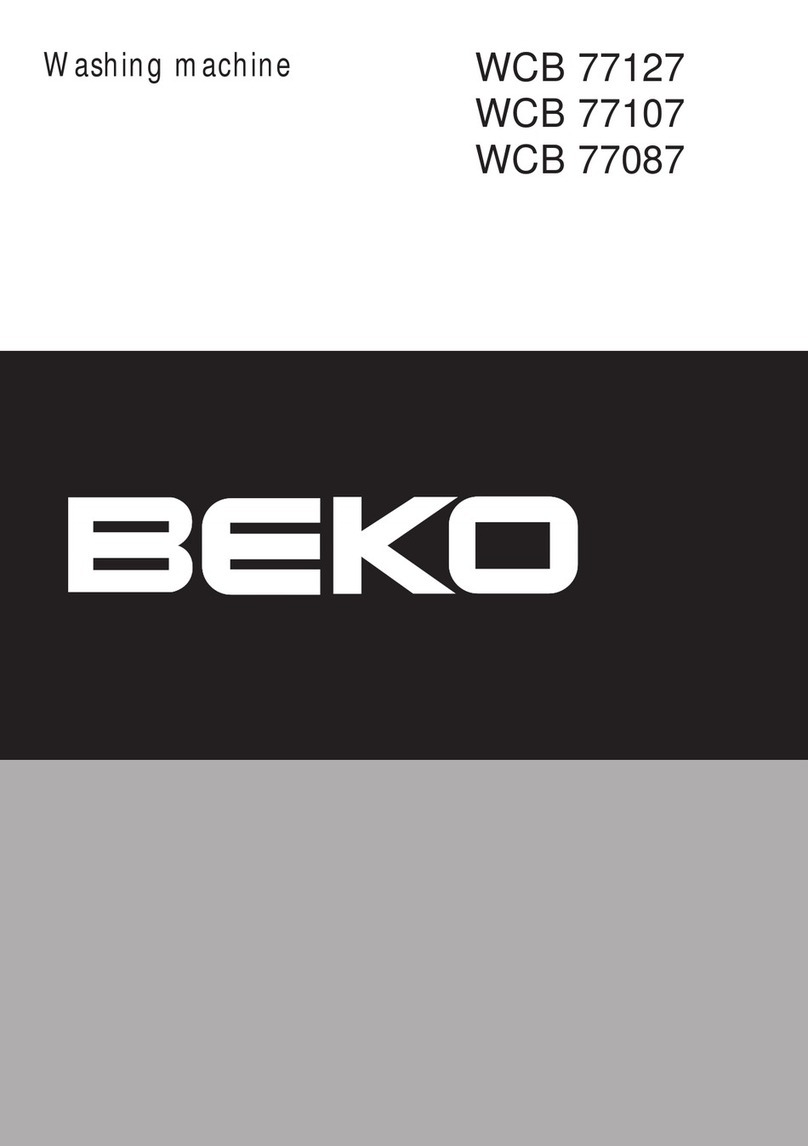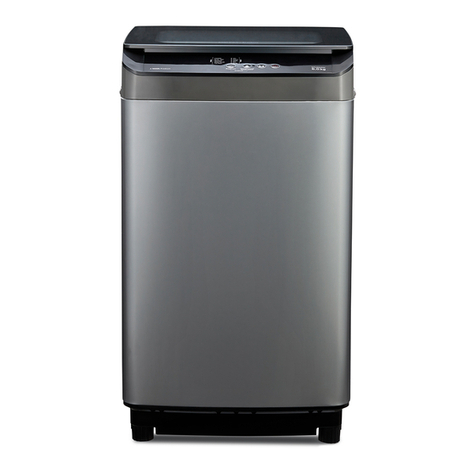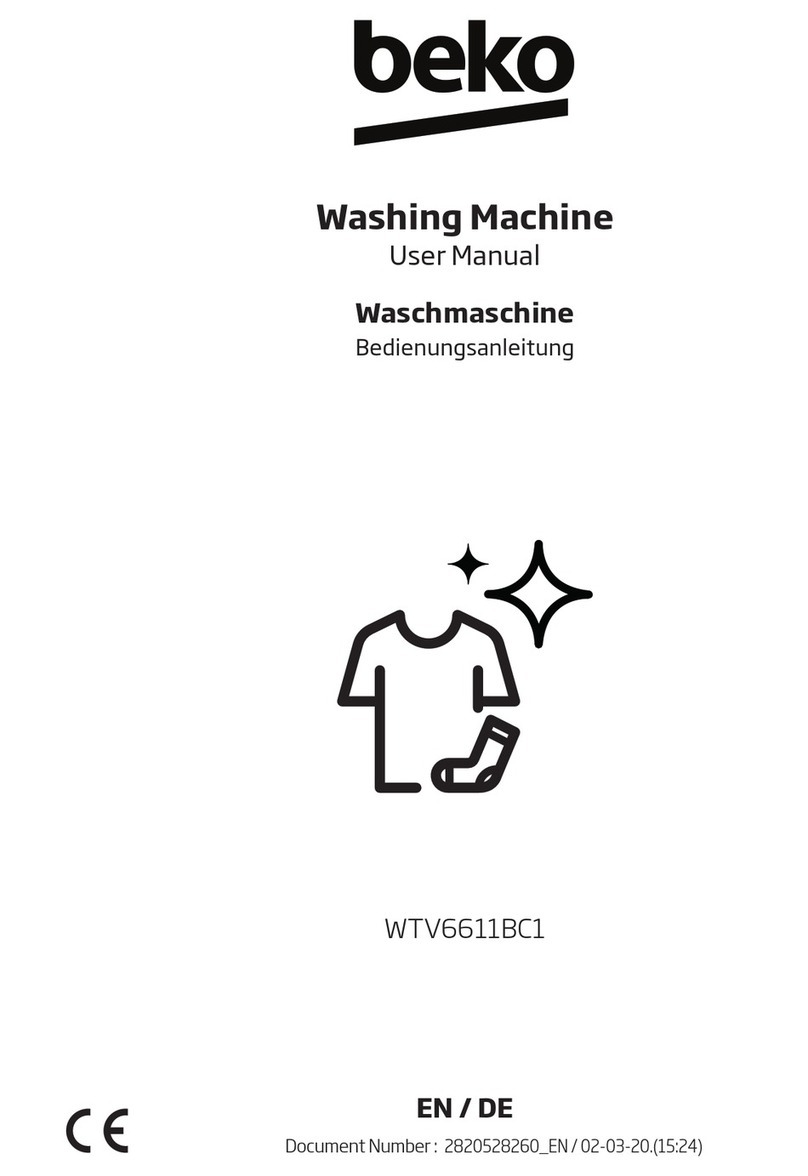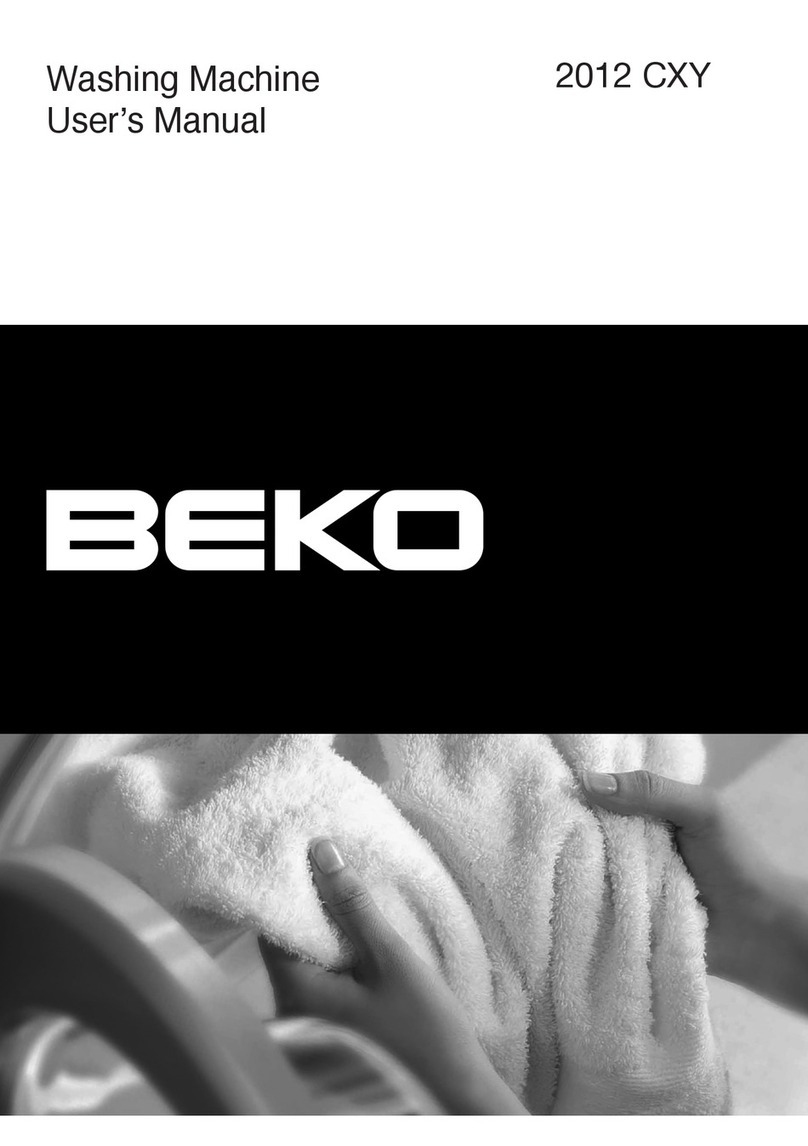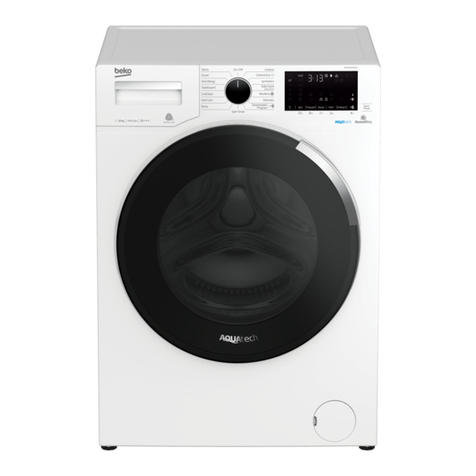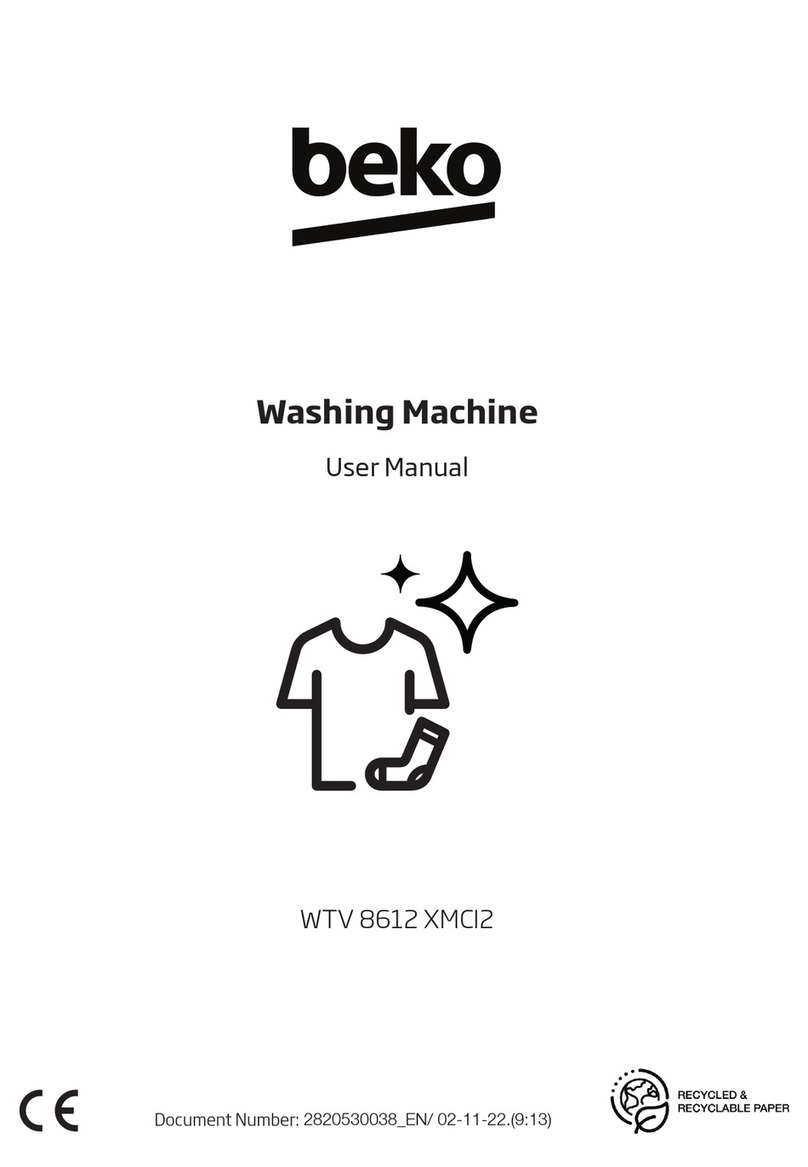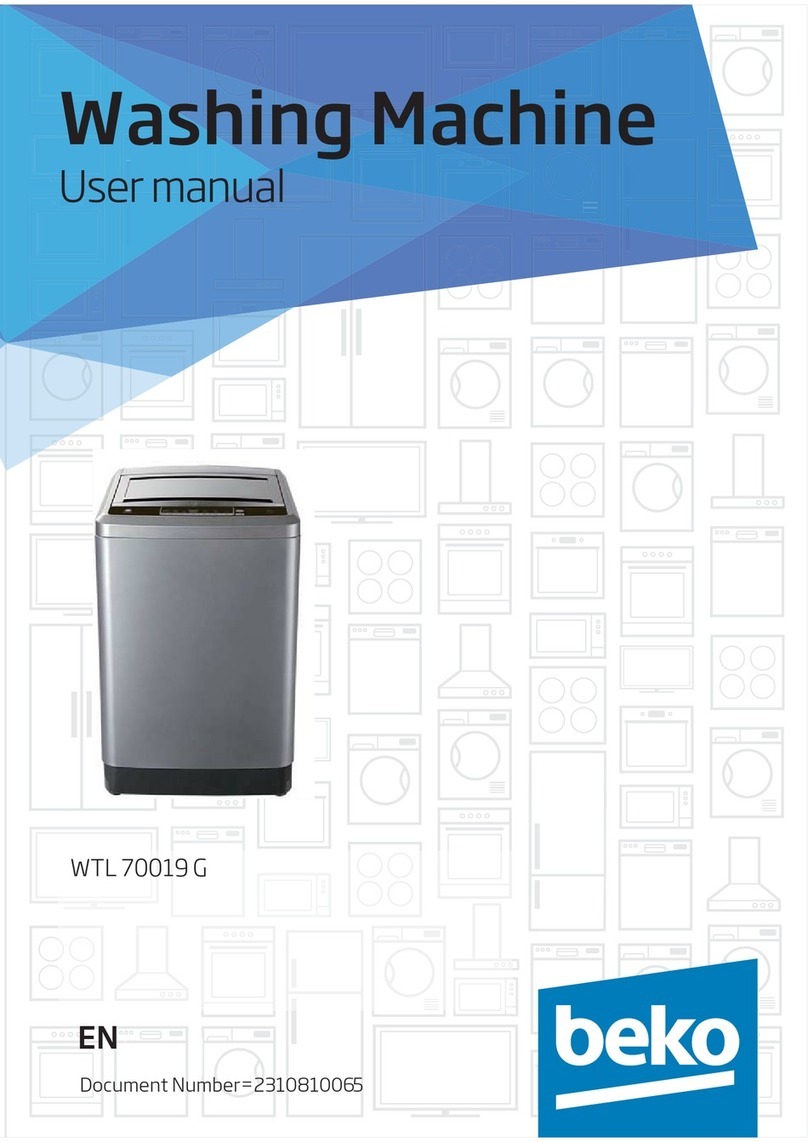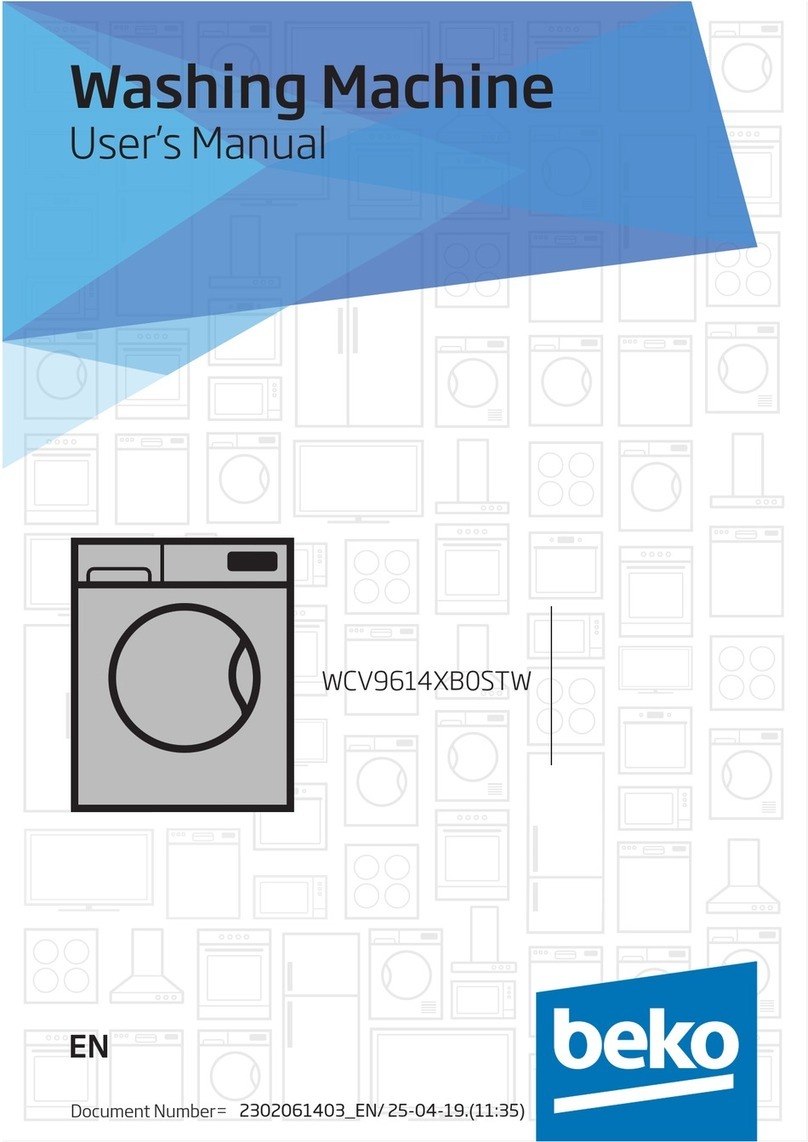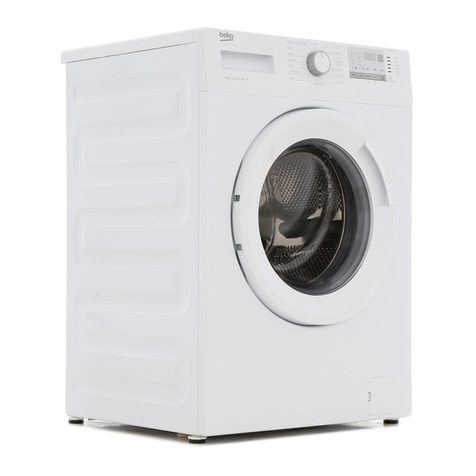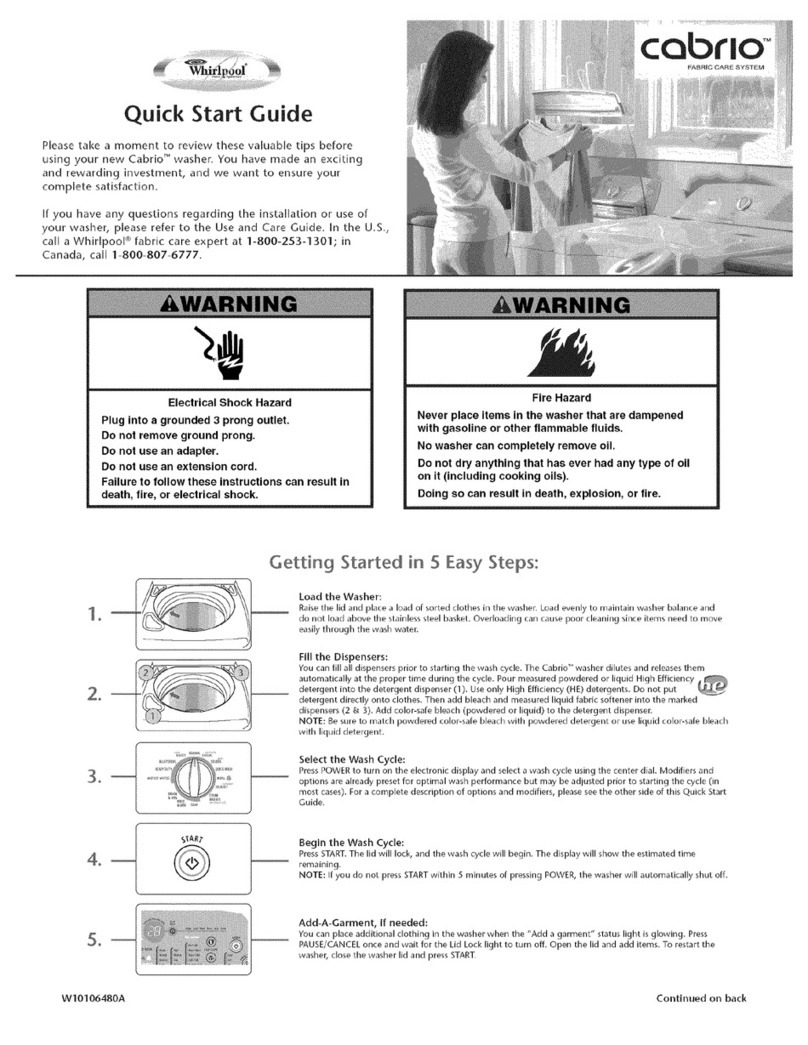
15 / EN
Washng Machne / User Manual
4.4.7 Electrcal connecton
Connect the product to a grounded outlet protected by a 13 A fuse. Our company shall not
be liable for any damages that will arise when the product is used without grounding in
accordance with the local regulations.
• Connection must comply with national regulations.
• The wiring for the electrical outlet circuit must be sufficient to meet the appliance
requirements. Use of a Groud Fault Circuit Interrupter (GFCI) is recommended.
• Power cable plug must be within easy reach after installation.
• If the current value of the fuse or breaker in the house is less than 13 Amps, have a
qualified electrician install a 13 Amp fuse.
• The voltage specified in the “Technical specifications” section must be equal to your
mains voltage.
• Do not make connections via extension cables or multi-plugs.
BWARNING:
Damaged power cables must be replaced by Authorised Service Agents.
Electrical requirements
Before you insert the plug into the wall socket make sure that the voltage and the
frequency shown in the rating label corresponds to your electricity supply.
We recommend that this appliance be connected to the mains supply via a suitable
switched and fused socket in a readily accessible position.
Should the mains lead of the appliance become damaged or need replacing at any time, it
must be replaced by a special purpose made mains lead which can only be obtained from
an Authorised Service Agent.
BWARNING:
This appliance must be earthed
If the fitted moulded plug is not suitable for your socket, then the plug should be cut off
and an appropriate plug fitted.
Destroy the old plug, a cut off plug with a bare cord could cause a shock hazard if inserted
into a socket elsewhere in the house.
The moulded plug on this appliance incorporates a 13A fuse. Should the fuse need to be
replaced an ASTA approved BS1362 fuse of the same rating must be used. Do not forget to
refit the fuse cover. In the event of losing the fuse cover, the plug must not be used until a
replacement fuse cover has been fitted. Colour of the replacement fuse cover must be the
same colour as that visible on the pin face of the plug. Fuse covers are available from any
good electrical store.
